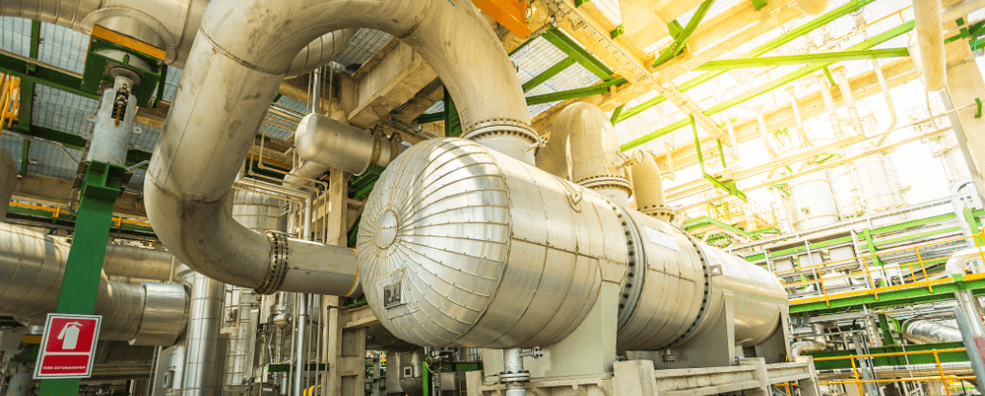What is Pressure Vessel Inspection?
Pressure Vessel Inspection can refer to inspecting the vessel’s condition externally, internally, or both. In these inspections, inspectors may Collect visual data regarding the vessel’s disease, including the state of insulation, welds, joints, or structural connections.
Pressure Vessels are designed to operate safely at a specific pressure and temperature, technically referred to as the “design pressure” and “design temperature.” A vessel inadequately designed to handle high pressure constitutes a significant safety hazard.
Quick Navigation
What is a Pressure Vessel?
A container that holds vapors, gases, or liquids at pressures above ambient pressure. How important is ensuring vessel safety? Its definition is essential as the vessel, which covers in the shape of a closed container, is designed to hold gases or liquids of pressure sustainability different from the ambient pressure. If it doesn’t, the consequences are fatal.

Pressure Vessels are used in various applications ranging from industrial compressed air receivers to domestic hot water storage tanks. Other examples include recompression chambers, distillation towers, mining operations, petrochemical plants, nuclear vessels, submarines, space ship habits, and storage vessels for liquefied gases like ammonia, chlorine, propane, butane, and LPG.
The pressure vessels are used to store fluids under pressure. The fluid being stored may change the state inside the pressure vessel as in the case of steam boilers or combine with other reagents as in a chemical plant.
- Filter Vessels (Bag, Cartridge, Coalesces, etc.).
- Gas /Liquid Separators.
- Bioreactors.
- Air Dryers.
- Air Receivers.
- Gas Scrubbers.
- Media Filters.
- Heat Exchangers.
- Deaerators.
- Digesters.
What are the types of Pressure in a Pressure Vessel?
Various types of pressure terminology are used when a pressure vessel is designed. Like – Operating pressure, Working Pressure, MAOP, etc.
1). Operating Pressure
Operating Pressure is the pressure at which the device/equipment/pressure vessel operates under normal conditions. In simple words, we could say General Pressure Condition in a pressure vessel regularly.
2). Maximum Operating Pressure
Maximum Operating Pressure is the pressure engineer will encounter in the process operation, including a margin for any possible surge or fluctuation. In other words, we can say a wall may safely hold in regular operation.
3). Design Pressure (DP)
The Engineer decides on this Pressure based on temperature, Environment condition, Service Condition, Existing Fluid, and the design engineer’s previous experience and sound judgment.
4). Maximum Allowable Operating Pressure (MAOP)
It is considered the maximum possible safe Pressure that the wall of the equipment can withstand. MAOP checks for the equipment’s wall failure based on Pressure Experienced.
5). Maximum Allowable Working Pressure (MAWP)
The weakest point of the equipment experiences maximum Pressure before failure. Temperature stress has a major role in the failure of the equipment, so it is unpredictable and difficult to calculate theoretically.
What are the Pressure Vessel Standards throughout the World?
- EN 13445: the current European Standard, extensively used in Europe.
- ASME Boiler and Pressure Vessel Code Section 8. Rules for Construction of Pressure Vessels.
- BS 5500: Former British Standard for the design and construction of export equipment.
- BS 4994: Specification for designing and constructing vessels and tanks in reinforced plastics.
- AD Merkblatter: German Standard, harmonized with the pressure equipment directive.
- EN 286 (Parts 1 t0 4): European Standard for superficial pressure vessels (air tanks).
- B51-09 Canadian Boiler, pressure vessel, and pressure piping code.
- ASME PVHO: standard for pressure vessels for human occupancy.
- CODAP: French code for Construction of United Pressure Vessel.
- AIAA S-080-1998: AIAA Standard for Space Systems – Metallic Pressure Vessels, Pressurized Structures, and Pressure Components.
- IAA S-081A-2006: AIAA Standard for Space systems – Composite Overwrapped Pressure Vessels (COPVs).
- ISO 11349: Compressed Natural Gas (CNG) cylinders.
Safety Precautions for Operating Pressure Vessels
- Timely Maintenance.
- Maximize Awareness.
- Proper Knowledge and Training.
- Follow all safety Protocols.
- Understanding Operating Conditions.
- Protective Device Installation.
- Inspect it, Anyway.
- Replace when Necessary.
- Install Safety Equipment.
- Material Used.
- Quality of Welding.
- Incorporating inbuilt Devices for Protection.
- Non-Destructive Testing (NDT) Process.
- Testing of Pressure Bearing Capacity and Mechanical Strength.
Why Choose Us?
As a leading Pressure Vessel inspection service provider, the TUV Austria Bureau of Inspection & Certification is also accountable for several quality control sections. Inspection and ensure stricter standards apply to all evaluation procedures. Given our credible experience with the suppliers, we have profound ways of identifying hurdles between the processes.
We have a strong network of quality inspectors throughout the different provinces of Pakistan, which allows us to conduct a Pressure Vessel Inspection better and more fruitful.
In addition, to Pressure Vessel Inspection Service, we also offer a range of complimentary services:
- Third Party Inspection Services
- Pre-Shipment Inspection Services
- Risk-Based Inspection Services
- Crane Inspection Services
- Lifting Equipment Inspection Services
- QA / QC Services
- Construction Supervision Services
- Technical Manpower Supply Services
- Non Destructive Testing (NDT) Services
- Storage Tank Inspection Services
- Pressure Equipment Directive (PED)
Would you mind sending an Enquiry so we can assist you?